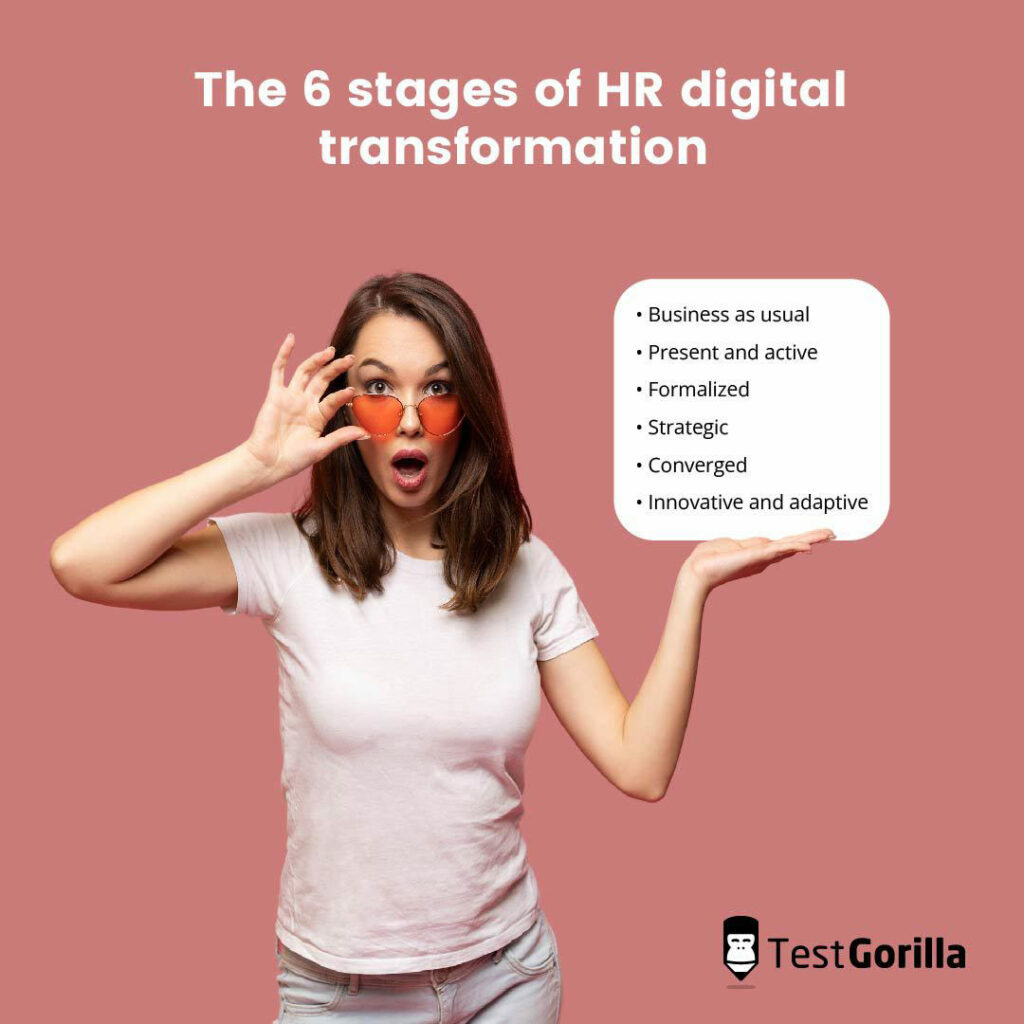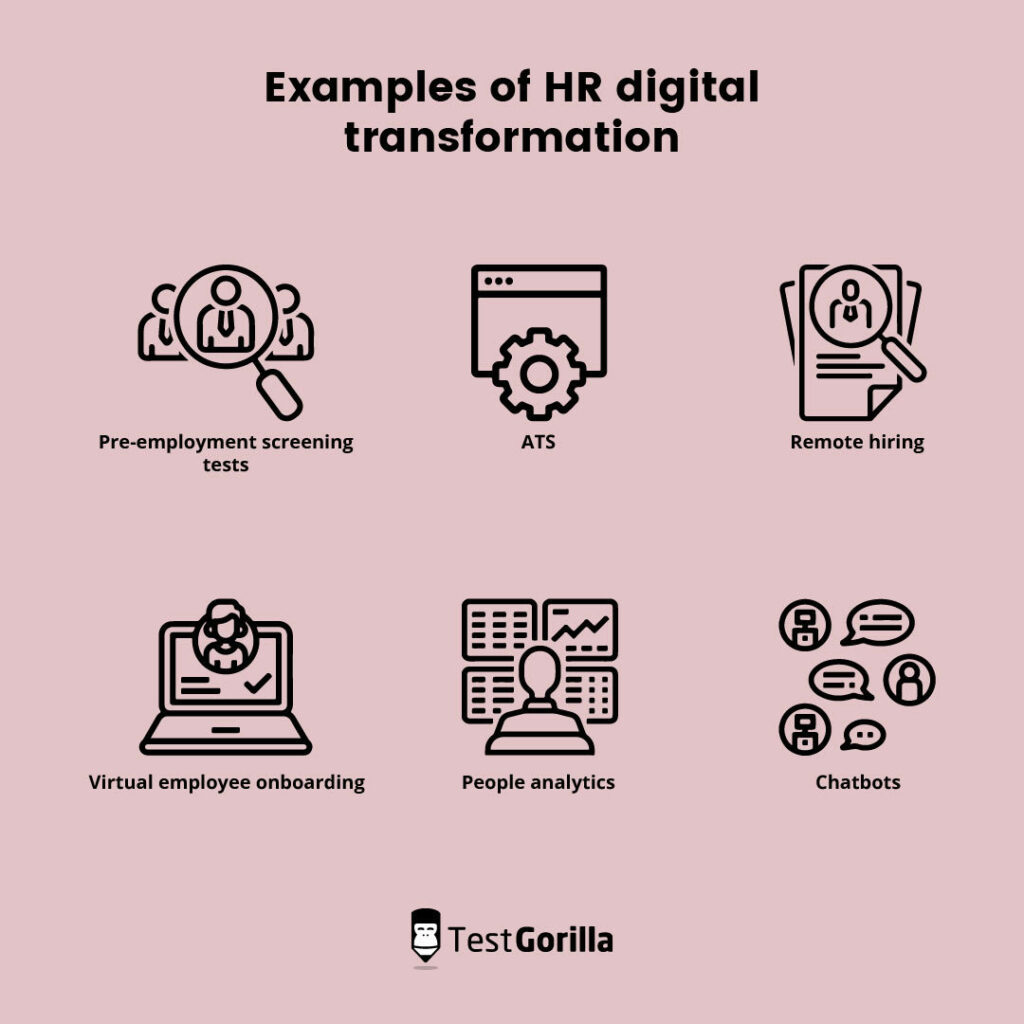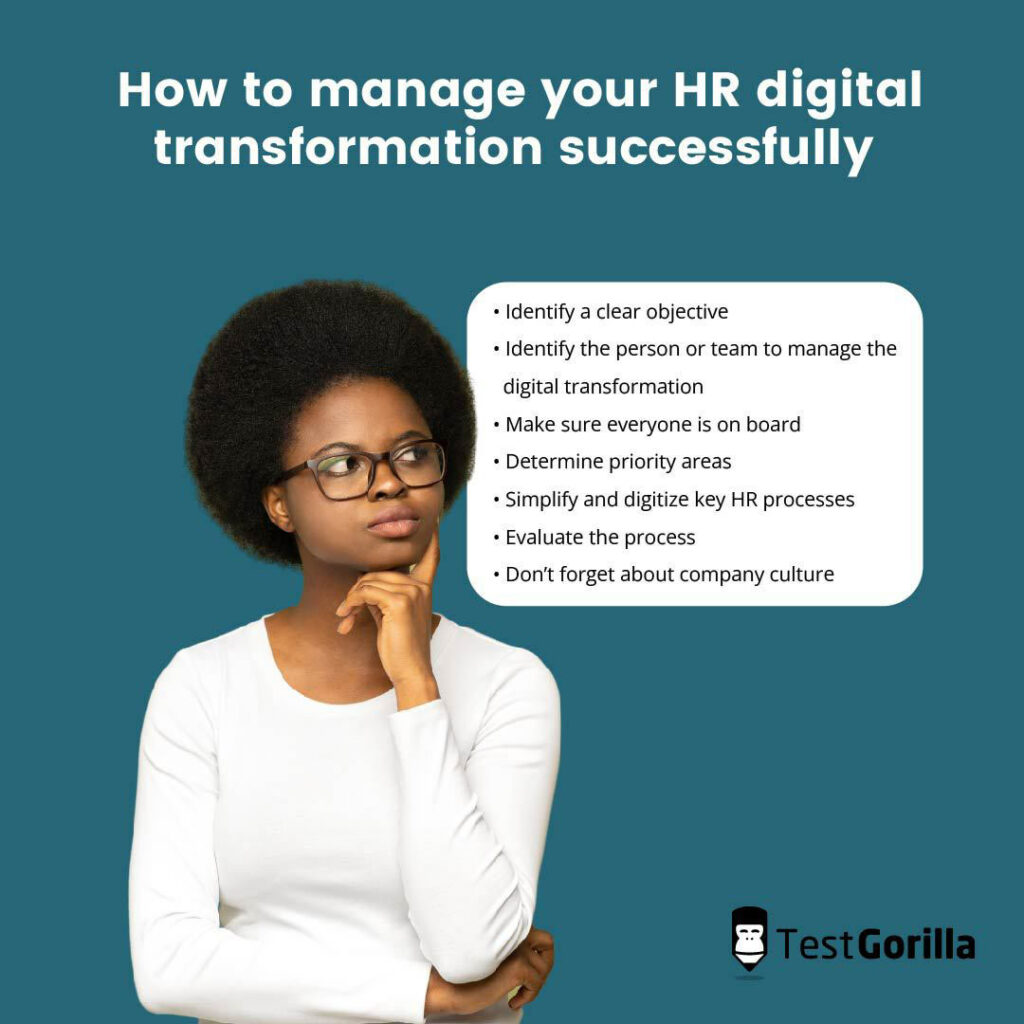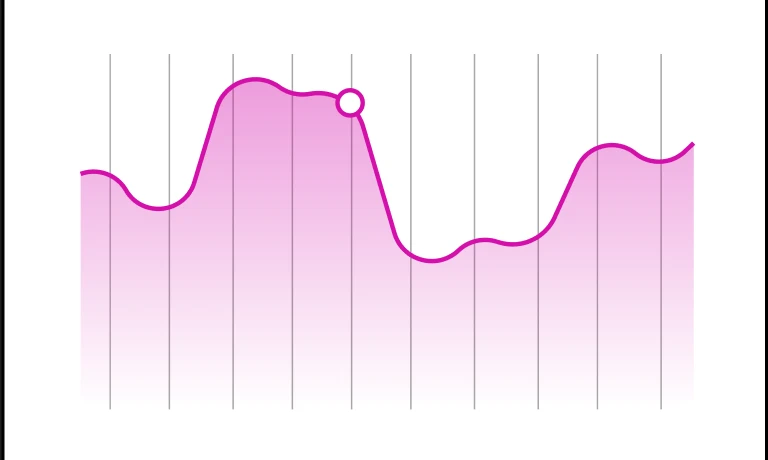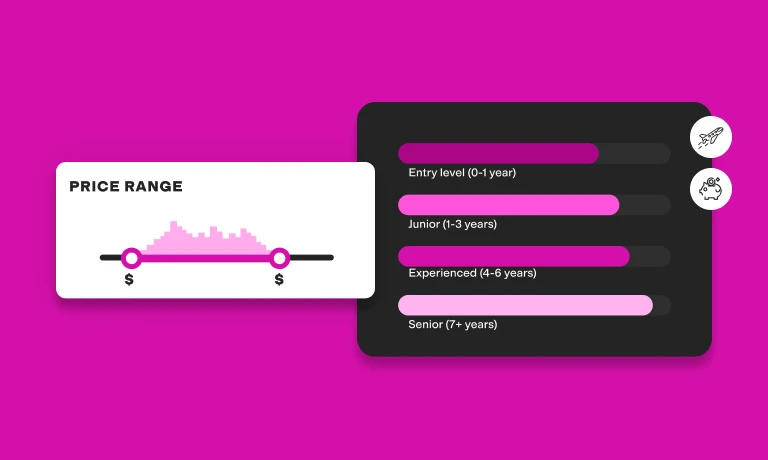As the world is finally putting Covid-19 in the history books, changes the pandemic has brought to how we view work is being felt by companies worldwide.
While many business leaders expect a return to the office for most of their employees, because they have invested in retail estates, workers’ expectations are different. According to a Ladders report, almost 20% of all jobs[1] are currently remote, which means that close to 20 million jobs in the US will not see a return to the office.
Indeed, remote and hybrid work increased the productivity of many workers, improved work-life balance, reduced retail estate costs for businesses, and generated a wider talent pool from which to hire. Therefore, it is safe to say that remote and hybrid work are here to stay.
These changes could make or break a company in the next few years if they haven’t already. Businesses that manage their digital transformation will be better equipped for the future.
This is where HR departments and all professionals in hiring roles must buckle up and begin their HR digital transformation, helping their companies evolve into the new era of digital work.
This article will discuss what HR digital transformation is and why every company needs to embrace it, as well as what it means to successfully digitize and how to manage your HR digital transformation. Finally, it will outline some challenges you might face during the transitioning period.
Table of contents
- What is HR digital transformation?
- Why do you need to transform your HR function?
- What constitutes a successful digital transformation?
- The 6 stages of HR digital transformation
- Examples of HR digital transformation
- How to manage your HR digital transformation successfully
- Challenges to HR digital transformation
- Empower your company and your team by digitizing your HR
What is HR digital transformation?
At the most basic level, digital transformation can be defined as the transition process from a business that does most of its work manually to one that uses technology in all its core functions.
Although the phrase might suggest this process is only about HR, that is not the case. HR digital transformation is the complete remodeling of a business, led by its HR department.
Neither should you think that HR digital transformation is just about technology. No. It starts with your leaders and key stakeholders, and how people approach work, and it permeates toward changing your company culture to one that embraces the potential offered by digital technology.
You need to think about digital transformation as a process and an outcome.
The process is the act of changing how things are done, moving from manual-based processes to more automated and data-driven systems.
The outcome is how your business will run its operations hereafter, keeping in mind that the world as a whole is moving towards digitalization in all aspects, not just work.
Artificial intelligence, cryptocurrencies, automation – all these changes already profoundly impact our lives and companies. Embracing this change sooner rather than later will give you a better chance at surviving and outperforming your competitors.
Another facet to take into account is to avoid reducing digitalization to the shiny promises of technology and instead consider how your HR digital transformation can be a new business model that will help elevate your company to new horizons.
Rather than simply throwing resources into new technologies and following the latest tech fad, which most likely will fall flat on its face if done on its own, you should think carefully about how HR digital transformation can have a long-lasting and meaningful change for your business operations.
This includes how you create your product and services, how you can transform them using emerging technology opportunities, and learning what works and what doesn’t for your company.
It would be a mistake to think that when you digitize your processes the work will be finished. It’s a continuing process that you must refine as you go to drive the maximum out of your HR digital transformation.
Therefore, as an HR leader, you need to understand why it is important to digitize your work processes and, more importantly, how to do it. This is what we’ll discuss in the following sections.
Why do you need to transform your HR function?
As with every other venture, whether it be business transformation, hiring more people, or launching a new product, you need a clear goal of what you want to achieve.
You should think about how digital transformation will benefit your HR processes, how it can help your company more widely, and whether you can start all at once or if you should begin step-by-step. These are all valid questions you should ask yourself as the person or team that will manage the HR digital transformation.
In essence, HR digital transformation refers to how HR changes the way it functions, from payroll to performance management, perks and benefits for employees, learning and development, hiring, and remote onboarding.
The goal of your HR digital transformation can include any or all of the following elements:
1. To automate processes
As technologies develop, so do the processes that constitute the bread and butter of every HR department. These include hiring and talent management, payroll and benefits, learning and development, and compliance with laws and safety regulations.
When it comes to automating these processes, you can consider how technology can help your HR department do its job more efficiently, saving time and resources. These processes were once done by hand and HR professionals would go over files and documents to ensure everything ran smoothly.
Nowadays, that work can be cut in half and completed with less personnel, saving valuable resources for other business needs.
2. To maximize candidate and employee experience
The HR digital transformation will aid your candidate and employee experience by providing efficient automated sequences according to the stage of recruitment or learning and development process.
You can use pre-employment skills tests, like those offered by TestGorilla, to ensure you get the right candidates before inviting them to an interview. You can use technology for your learning and development schemes. Software can determine when an employee is due for a training course to learn new skills or, based on their performance, if they need a refresher of their current knowledge.
This will improve your candidate and employee experience, as well as improve your use of time and resources.
3. To free up time and resources that can be allocated to more important tasks and assets
The HR department may have been viewed as simply an administrative department in the past, but today it is the driving force behind your company’s most important asset: its people. As you undergo your HR digital transformation, you can begin to focus on other important tasks.
These could include envisioning new business models, creating new ways of managing and developing your employees to gain the most value out of them, and implementing new remuneration and benefit systems that will drive down turnover rates.
The more time your HR department has to work with your employees rather than thinking about how to hire more people, the more you’ll achieve in the long run.
4. To benefit from a global talent pool by hiring remotely
If businesses were constrained by their location before when it came to recruitment, as companies embrace their HR digital transformation, they will have an almost endless supply of professionals to choose from. Digitalizing your hiring processes will enable you to hire people from across the globe, widening your access to the most suitable candidates.
5. To remain flexible, agile, and competitive
Finally, an HR digital transformation will help your company become more flexible and agile, creating more opportunities for your employees and making your business more competitive in the world market.
This includes replacing traditional hierarchical models of work and embracing a flatter organizational model in which everyone is seen as an equal partner working toward the same goal: driving greater profits for your business. Such a model can help you make faster and better decisions, improve the skills of your workforce, and improve your performance management.
The best insights on HR and recruitment, delivered to your inbox.
Biweekly updates. No spam. Unsubscribe any time.
What constitutes a successful digital transformation?
A successful HR digital transformation will involve automating most HR functions. You’ll make decisions based on data, instead of intuition, and you’ll follow reports and numbers to see how your employees are progressing with their work.
You should see a reduction in expenditure for recruitment, benefits, and remuneration – even utility bills since you’ll move most of the work out of the office space. Your company will embrace a culture of digitalization, and everyone will be on board with the idea of remote work, communicating via Zoom or Google Meet, and using software to track assignments.
To be truly successful, however, you first need to understand how transformation takes place. This is discussed in the next section.
The 6 stages of HR digital transformation
A report by Brian Solis for the Altimeter Group lists the six stages of digital transformation more broadly, all of which are also applicable to the HR department more specifically.
The 6 stages include:
Business as usual: Leadership is mostly against any change. Processes continue to be done manually, the HR department is still mostly busy with administrative work, and user and employee experience aren’t a top priority.
Present and active: Leaders begin to take into account increased competition with other businesses, along with user and employee experiences. Social media trends begin to have an impact on how things are done. Digitalization experiments are being introduced in some of the company’s processes.
Formalized: Real change starts to have an impact. Customer feedback and data begin to influence decision-making, and widespread collaboration within the company and its departments is encouraged. Executives begin to extend their view of how things are done outside their own company.
Strategic: The customer experience is now center stage. Their journeys are being mapped and shared across departments to create a better business model. Investments are made in new people, new positions, and new technologies.
Converged: A dedicated team is created to guide the company’s HR digital transformation. The customer journey is remapped to increase satisfaction and retention. Cloud technologies are implemented to make the digital transformation process easier and more readily available for all employees.
Innovative and adaptive: The final stage goes beyond the HR department and the digital transformation is now part of the whole company, its processes, and its employees. A dedicated innovation team evaluates new and emerging technological trends and tries to implement them proactively, in order to gain an edge over the competition.
Understanding these stages will help you recognize the point at which your company currently stands and what needs to be done so you can move to the next stage.
But progression requires an awareness of what the HR digital transformation really means. The next section will show you examples of the areas in which such a transformation is already underway and your HR department can greatly benefit if it hasn’t already.
Examples of HR digital transformation
In this section, we’ll look at some of the ways HR departments are transforming and what this means for the future of HR.
1. Pre-employment screening tests
Pre-employment screening tests are the future of every HR department and must be a staple of the digital transformation of companies everywhere.
These tests offer standardized, objective methods for determining candidates’ skills and experience, cognitive abilities, emotional intelligence, and personality type – all before even getting to an interview with a recruiter.
Once candidates finish their assessment, they are ranked according to their results, helping HR professionals make informed, data-backed decisions on the suitability of candidates.
With more and more candidates entering the labor market and fewer resources for HR departments to determine who is suitable for the right job, pre-employment screening tests represent a sure way to facilitate your HR digital transformation and gain the benefits from landing top talent.
2. ATS
Applicant tracking systems (ATS) are great software tools to include in the HR digital transformation process.
An ATS enables you to consolidate many recruitment processes, so you can source, evaluate, manage, and hire candidates in a single platform. With a great ATS, you should be able to:
Create a recruitment portal, where all candidates can view vacancies and apply instead of searching on your website or on job search websites
Create customized input fields suited to your specific recruitment needs and build customizable screening tests
Shortlist candidates based on search criteria and keywords, instead of sifting through resumes manually
Keep a calendar to help you schedule interviews and video calls and take notes
Collect data and analytics so you can follow every candidate’s progress throughout the recruitment process
TestGorilla has many integrations available for different ATS software that you can use with our own assessment methods. Implementing an ATS will boost your ability to scout and recruit new employees, and investing in such software is another step toward your HR digital transformation.
3. Remote hiring
As noted, the pandemic has created many remote work opportunities. Those who have experienced these new work patterns are not interested in going back to the office full time once things go back to “normal.”
Indeed, according to a recent McKinsey survey, around 58% of employed workers – or close to 92 million people – in the US alone want the option of at least partial remote work.
These numbers will only grow as more companies transition toward the digital sphere. For HR departments, that means that remote hiring will increasingly become the most common way to find and recruit new employees.
As part of the HR digital transformation, remote hiring has many benefits, some of which include:
Reduced costs for renting facilities and paying utility bills for businesses
Fewer costs for commuting and lunch expenses for employees
Increased productivity
Improved customer and employee satisfaction
The HR digital transformation of every company needs to include some degree of remote hiring, and creating a bulletproof remote hiring process has become easier with increased experience and know-how.
4. Virtual employee onboarding
Another part of the remote hiring process involves developing a sound virtual employee onboarding program. This can prove difficult at first since you won’t have face-to-face contact with your new employee to show them the ropes. But with some experience, you’ll quickly iron out any complications.
Creating a plan and a checklist is your best bet to do things properly. Such a checklist will include:
Preparing all the necessary documentation
Sending a welcome email and introducing the new employee to the rest of the team
Assigning them a mentor
Setting up all necessary accounts and sending them the software and hardware they’ll need for their job
Planing online training sessions and meetings
All these steps are necessary for any HR digital transformation and will prove crucial to all companies as they move towards remote hiring and work.
5. People analytics
The future of HR and part of its digital transformation will be the collection of people data, both for employees and customers alike.
The more your company knows how productive your employees are and what you can do to reskill and upskill them, the more return on investment you’ll get from hiring them. Similarly, the more you know about your customers – how they behave and what products and services they want – the more you can deliver these products to them.
Although this concept is not new and businesses have collected data for decades, they have been doing so manually, through face-to-face surveys and phone calls. Nowadays, you can do all that with applications and software that collect data for you and even provide you with in-depth analysis reports.
The digital transformation of your HR department will benefit from such tools, enabling better-informed decisions and preemptive action to tackle problems and gain an edge over your competitors.
6. Chatbots
Finally, chatbots have begun to play a more important role in your customer experience. An online chatbot can answer most commonly asked questions without the need to hire extra personnel to pick up phones or chat with people.
There is still room for improvement in this area, but chatbots will continue to evolve, perhaps negating the need for a customer-support team altogether in the future. This means you can hire fewer members of staff, thus reducing payroll costs.
The digital transformation of HR will have to embrace this change and figure out ways to integrate emerging customer support systems in order to become more time and resource efficient.
How to manage your HR digital transformation successfully
It’s easy to talk about your HR digital transformation, but it’s another thing to implement it. Every business will have its own take on what to do and how to digitally transform itself, based on its needs, market, product, or service.
However, you should take into account several key components when beginning your HR digital transformation in order to make a positive shift.
1. Identify a clear objective
Why do you need HR digital transformation? Is there a clear business goal in sight? How will you do it and who will be responsible?
You need to answer these questions before beginning your HR digital transformation.
Your goal will probably be to resolve an issue affecting your employees or business. This is why your HR digital transformation needs to be focused on your employees and how that will impact the whole business.
To make this more viable, you can ask yourself these additional questions:
How will this transformation benefit my company and my employees?
If you’re implementing an ATS, for example, you shouldn’t be the only one who can use it or view the results. Applicants and your current employees should have access to the ATS to see their performance, update their profile, and view any changes made to it.
Will it make HR processes easier?
You might think that digitally transforming your HR is the best way forward. But how will it actually benefit your company? It may be the case that some recommendations are unsuitable for your business, so you need to refine and tweak them to fit them into your business model.
Is this goal measurable?
Having an end goal is essential for a successful HR digital transformation.
Do you want to cut recruitment or upskilling costs and thus reduce overall HR expenditure? Are you a large company that needs faster recruitment mechanisms to fill constantly emerging vacancies?
How will you measure success? Will you check HR expenditures from previous years and compare them to your HR costs after you implement some or all of the above examples? Or is your main aim to improve employee satisfaction rates?
All of these questions are relevant, and they can guide your HR digital transformation journey.
2. Identify the person or team to manage the digital transformation
Who will be responsible for the HR digital transformation of your company? Will you create a separate team or outsource it to someone else? Will you oversee it yourself as the HR leader or will you entrust the responsibility to your subordinates?
Again, these are important questions to bear in mind for ensuring a successful transition. Maybe you need someone with great people skills to make the change easier for everyone by explaining it in a meaningful and engaging way.
Whoever it is, make sure they’re up for the task, as the quality of your HR digitalization lead can make or break your transformation.
You should also establish a timeframe for completing the transformation. Deadlines will ensure the people responsible for the change remain focused and achieve their goals in time.
Creating a timeframe for implementation may prove beneficial. Three months is usually enough time to see if a particular technology works for your company. If it’s not providing results, change it and avoid wasting time.
3. Make sure everyone is on board
Since the HR digital transformation will affect your entire organization, you need everyone on board with the process to make it work. You don’t want someone on your team being reticent to change because they don’t understand why you’re doing it.
Make sure to explain to everyone why this change is needed and answer any questions that might arise. Getting everyone on board, from first-line workers to your stakeholders and executives, is the key to success when undergoing your HR digital transformation.
Indeed, communicating what needs to be done and why is the trickiest part, especially when you need the C-suite’s support. If you want them to give you the green light, you need to make a valid case for HR digital transformation. You want to build that case by showing them research and data on the topic, explaining all the benefits and potential challenges, which we’ll discuss shortly.
The same goes for your employees.
Your employees are the ones who’ll see the greatest impact of the HR digital transformation, so ensuring they familiarize themselves with the process is paramount to its success. Asking for their opinions and feedback on the process is essential to engage them with the process and make them feel part of the change.
4. Determine priority areas
You want to start your HR digital transformation with processes that will be easier to implement.
Undoubtedly, you’ll have a long list of ideas and areas that you want to digitalize. Make sure to start with the most straightforward to transform. Once you get going, the momentum and positivity generated from previous success will help you tackle the harder parts of the HR digital transformation.
From the above digital transformation examples, starting with pre-employment testing is likely to be the best starting point. You’ll be using TestGorilla’s software for screening purposes, freeing up time and resources so you can improve other parts of the business. When you see the improvements these tests bring, you can start implementing other technologies, like an ATS and chatbots.
5. Simplify and digitize key HR processes
Start small and simple, one step at a time. Don’t overcomplicate things.
Begin with the processes that will require the least effort – the recruitment process, onboarding, payroll, etc. This will build your case for HR digital transformation, and you’ll have the momentum needed to transform the entire company.
It may be a good idea to begin the HR digital transformation with a small team that can transition to automated processes. When you see how that works, you can transition more teams; this way, you won’t disrupt the whole business model of the company.
It is vital to trial new technologies and test how they work. If you come up against too many challenges, you can change tack to find a different approach that might work better. Although the above examples may seem great and easy to implement, you never know how your team will react to them.
Beginning small is therefore the best way forward, as you can more easily make necessary changes on the go.
6. Evaluate the process
Evaluations are key to understanding what works and what doesn’t. The important thing is not to simply review your work at the end when it might be too late to make changes, but to assess the changes during the process.
Being able to stop, reflect, and change your course of action will save you time and effort, not to mention money, in the long run.
And receiving feedback from those implementing the change is vital for the process. They may not like how something is working or they may notice that certain software is too complicated to work with. You want to retain the ability to change your course of action at any time to get the most out of your HR digital transformation.
7. Don’t forget about company culture
Make sure to incorporate the HR digital transformation within your company culture. You should add it to your current processes and establish a precedent so that everyone understands the logic of any changes.
Automating your HR processes is not enough to completely digitalize your company. You also need to create a culture of digitalization. This means that the mindset of your employees and management has to move toward a digital mindset. Once you implement your changes everything needs to be done digitally.
As the times change and more people born at the beginning of this century come into the workforce, the more they’ll expect you to align the organization with the latest technology trends. Thus, redefining your company culture is essential.
In addition, to enhance your digital transformation, you should start hiring people who can add value to your new digital company culture. Such individuals may include those with experience working in a company that has undergone a digital transformation or more generally in the digital sphere.
Such employees will ease the transition for your own company, making the whole HR digital transformation process more effective.
Challenges to HR digital transformation
Naturally, when implementing any sort of changes you might see certain things not working out the way you hoped. You need to be prepared for setbacks and glitches.
In addition, you may implement a technology, train your team how to use it, and work with it for a few months, only to realize it’s not reaping the right rewards. That’s fine. It doesn’t need to be a setback, but a chance to learn, test new ideas, and see what works best for you.
The difference between companies that succeed and those that don’t is the willingness to try new things and remain open-minded about how you’ll achieve your goals.
With that in mind, some of the challenges you might face when undergoing your HR digital transformation can include:
Not understanding the end objective
Lack of funds and/or personnel
Lack of expertise in digital transformation
Not having the right tools & software
Focusing only on the tech instead of your employees
To tackle these problems, you need to ask yourself the following questions:
Is the goal clearly defined? Have you missed something that might be important?
Can your team work with the software you’re using? Do they need additional training or do you need to find a different tool?
If you lack funds, how can you make the case for additional funding from management?
Whatever the problem is, discuss it with your team and try to find a solution. Sometimes, the answer is so simple that it escapes your mind, but having the right people around will help alleviate the issue.
The most important thing to remember, however, is that the HR digital transformation of your business will take time and patience.
Empower your company and your team by digitizing your HR
HR digital transformation aims to empower your company and employees to work with emerging technologies that will benefit any business in the long run. The idea is to move on from manual processes to those that use technology to aid efficiency and productivity.
For example, skills tests, in combination with the right ATS system, can help you reduce your time to hire significantly – and it will ensure your hiring decisions are objective and unbiased.
Automating processes, embracing a culture of digitalization, and not rushing your company’s transition is one sure way to digitize your HR and take advantage of its benefits.
However, you should remember that your digital transformation is not only about the tech but also about the people. Without the backing of your entire team, your transformation may fail. Thus, to gain the most out of this process, you need to ensure everyone knows why such a transformation must take place, mapping out exactly how it’s going to be done.
As the HR leader, you also have to remain patient, as the process will take time. There may be setbacks but the end objective is worth it because the digital transformation of any company is key to future success.
With TestGorilla, you’ll find the recruitment process to be simpler, faster, and much more effective. Get started for free today and start making better hiring decisions, faster and bias-free.
Source:
Data: Nearly 20% of All Professional Jobs are Now Remote. Ladders. Retrieved November 8, 2022
You've scrolled this far
Why not try TestGorilla for free, and see what happens when you put skills first.


